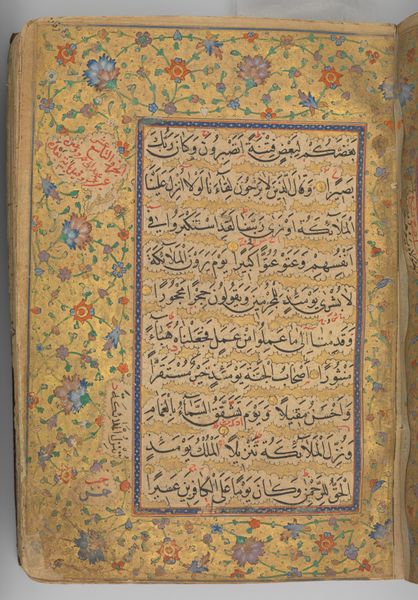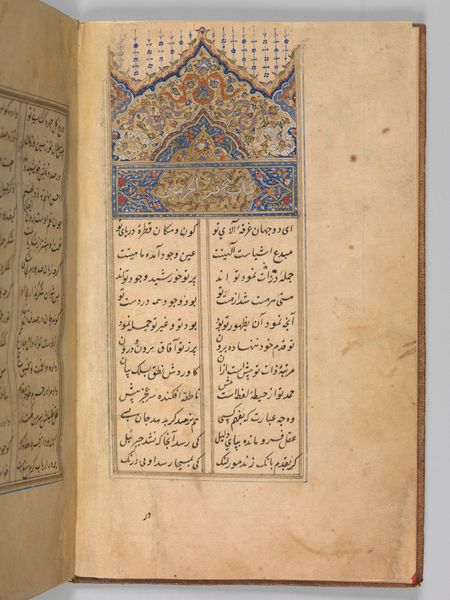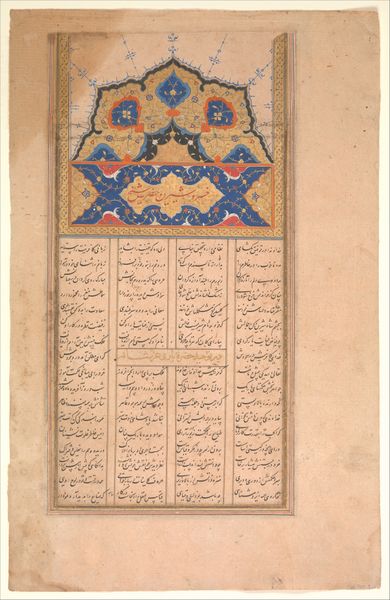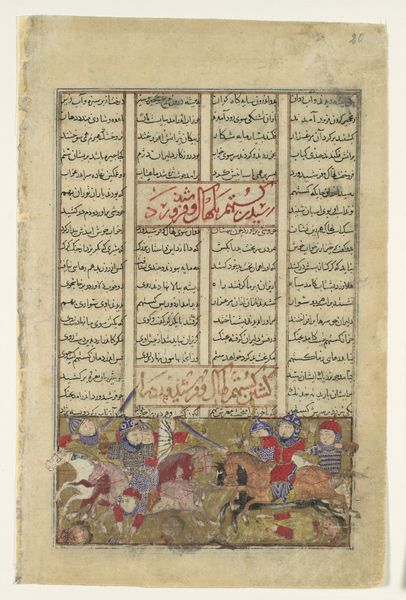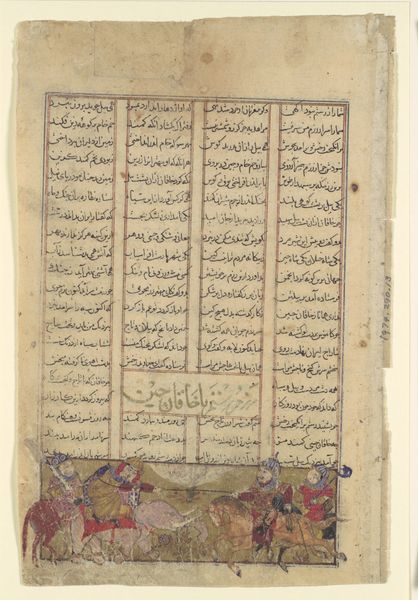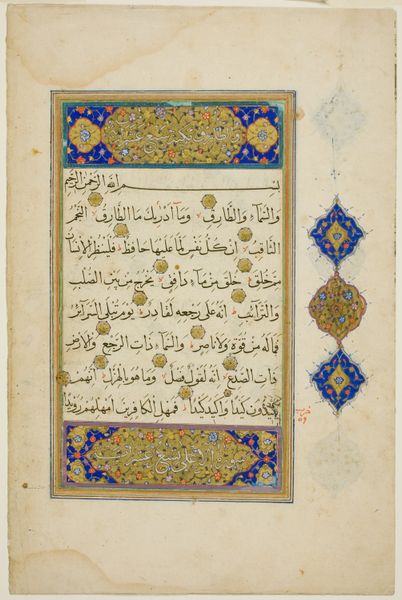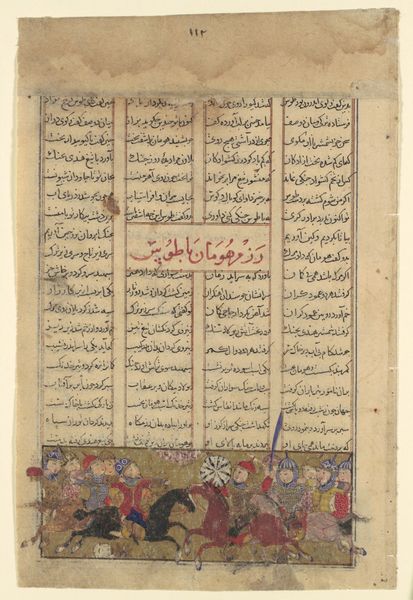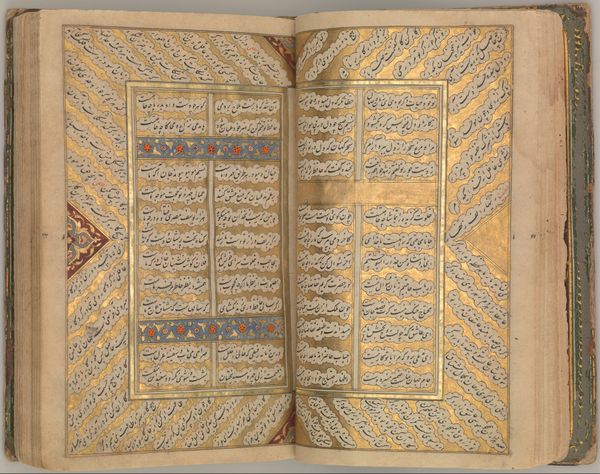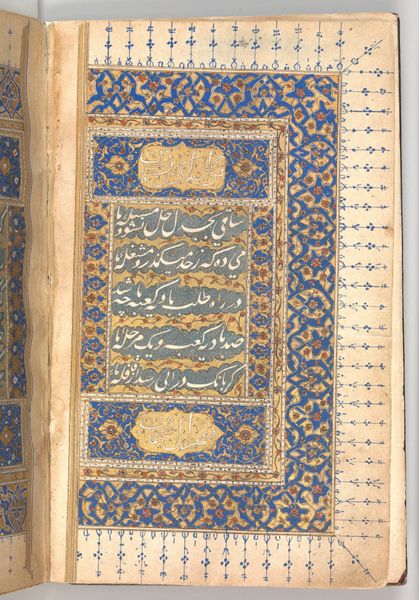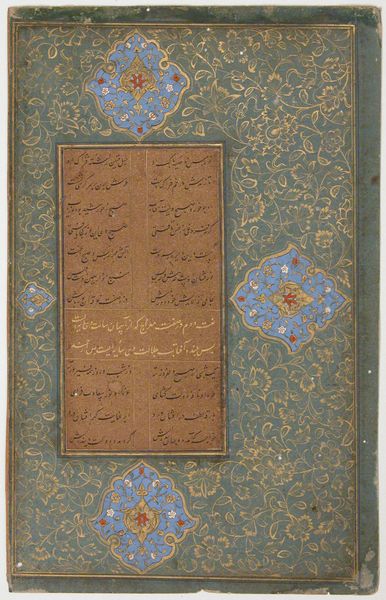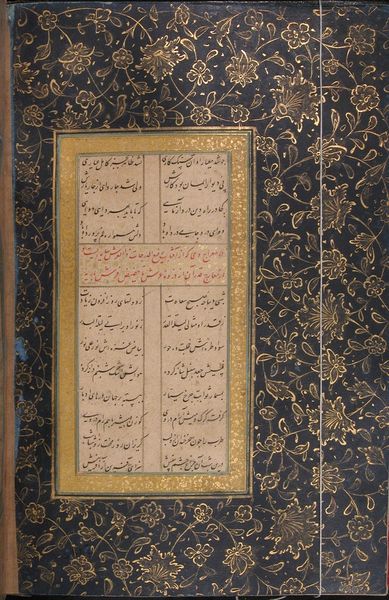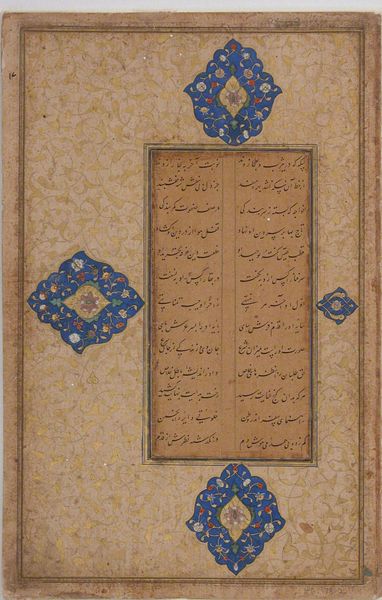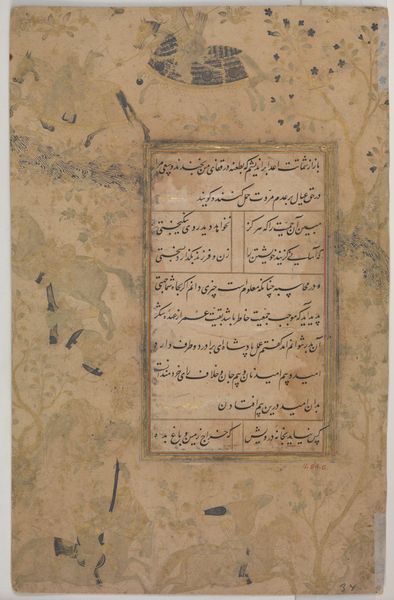
textile, paper, ink
#
textile
#
paper
#
ink
#
islamic-art
#
miniature
#
calligraphy
Dimensions: H. 7 1/2 in. (19.1 cm) W. 4 13/16 in. (12.2 cm)
Copyright: Public Domain
This is a page from Hizb (Litany) of An-Nawawi, created in the 13th century by An-Nawawi, filled with ornamental script and geometric designs that speak to the sacred function of the text. Notice the intricate floral patterns, the arabesques. The lotus, palmettes, and vines, meticulously rendered, evoke paradise. These vegetative motifs aren't merely decorative; they symbolize spiritual growth and divine beauty. Such imagery finds echoes in the illuminated manuscripts across continents, from the Lindisfarne Gospels to the Buddhist Sutras. The underlying impulse? To enshrine the word with visual splendor. But consider, too, how these botanical symbols morph across cultures. The lotus, revered in Buddhism, takes on new significance in Islamic art, embodying purity and transcendence. It shows how symbols are not static. They travel, adapt, and accumulate layers of meaning. This transformation invites a deeper engagement with the image. It reveals the powerful interplay between cultural memory and subconscious expression. Symbols are vessels carrying humanity's deepest emotions through time.
Comments
No comments
Be the first to comment and join the conversation on the ultimate creative platform.
